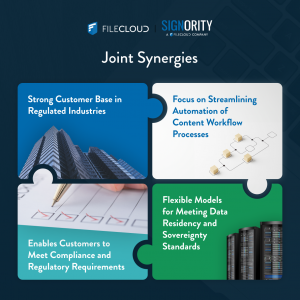Paper may seem harmless, but in reality, it causes severe environmental damage and has far reaching effects. It has become more important than ever for businesses to go paperless.
The pulp and paper industry is the third largest industrial polluter to air, water, and land. With this in mind, Canada and the United States are the world’s largest producers of paper and pulp products.
If we don’t smarten up soon our window of opportunity may quickly shut.
What’s the Damage?
Source Process
Right from the start, the paper and pulp industry causes severe damage to the environment, including our air, water, and soil. As you probably know, the paper comes from trees— in fact, 35% of all harvested trees, and 40% of all industrial wood is used for paper manufacturing. The United States alone cuts down more than 68 million trees each year, just for the production of pulp and paper products. These numbers are staggering when you consider the immense importance trees have in regulating our planet’s health. Since trees absorb CO2 and release oxygen, they mitigate the harmful effects of greenhouse gas. Moreover, a single 100-year-old tree can only produce 17 reams of paper, but when it’s cut down it will release 110 lbs of CO2 into the atmosphere. As such, this deforestation directly increases climate change. Not only does the removal of trees speed up the global warming process, but it also makes it more severe. Deforestation accounts for more global carbon emissions than trucks and cars combined. With this in mind, there is a strong link between high levels of atmospheric gas, and increased deaths and respiratory illnesses.
The removal of trees also severely damages the quality of our soil. Through transpiration, trees control the level of water in our atmosphere and directly help regulate the water cycle. When there are fewer trees, there’s less water! Through this, our soils become drier, negatively affecting its ability to sustain life— for both plants, and organisms. Moreover, soil and smaller plants use trees for shade. When they are removed, more UV rays are able to penetrate the ground, further drying out the soil. The removal of trees also increases surface runoff, which causes soil erosion. As such, our soil can become barren, further harming our environment.
Deforestation also threatens our planet’s biodiversity and contributes to species endangerment. Approximately 80% of the world’s land animals and plants live in forests. The removal of trees also means the destruction of their habitats and the introduction of pesticides into their ecosystem. In fact, upwards of 30 million acres of forest are lost each year. Moreover, trees help regulate a forest’s internal temperature through their canopy. The removal of the canopy fluctuates internal temperatures, which is extremely harmful to both plants and animals.
Removing trees also negatively affects neighboring and indigenous communities. More than 1.5 billion people rely on forests for the necessities, such as food, water, clothing, and shelter. Taking away their important resources causes social conflict, and threatens their livelihood.
Manufacture Process
The production of paper in of itself is also extremely harmful to the environment, neighboring communities and even their own employees. Each year, the world manufactures more than 300 million tons of paper, with 1 million tons of paper used each day. Unfortunately, paper mills emit significant levels of pollution. They release upwards of 220 million lbs of toxins each year, which affects our air, water, and soil. A measly 1 ton of paper creates 1.5 tons of carbon dioxide. This pollution has adverse effects on neighboring communities, and nearby ecosystems. They are also the largest industrial consumer of water, as the pulp and paper industry uses more water to produce 1 ton of product than any other industry. To better put this in perspective, 1.5 cups of water are needed to make one single sheet of paper, and approximately 300,000 litres are needed for 1 ton. Moreover, they are the second largest consumer of energy. To produce one ton of paper, 253 gallons of petrol are used. The production of secondary and supporting products are also incredibly harmful. For example, the production of ink relies on fossil fuels and harmful chemicals.
Even their own workers are not spared from the negative effects of paper production, as paper mill employees are subject to poor working conditions. In order to reduce wood pulp and bleach paper, employees are exposed to a toxic cocktail of chemicals. As such, they have an increased risk for dangerous health problems, like malignant lymphomas.
With all this in mind, by 2020 paper mills are expected to produce 500,000,000 tons of paper products annually.
Disposal Process
Let’s be honest, most of us do not recycle every single sheet of paper that we come in contact with— and even if we did, paper cannot be recycled indefinitely. Of the total waste in the United States of America, a staggering 40% is paper products. To hit home a bit more, 45% of paper printed in offices is thrown out by the end of the day. Unsurprisingly, 50% of the waste businesses create is paper. Even the supporting products are wasteful, as 400 million ink and 100 million toner cartridges end up in landfills each year. Just when you thought it couldn’t get any worse, at the end of its destructive life, paper either rots or is burned. The burning of paper emits CO2, while the rotting releases methane gas— a gas that is 25 times more toxic than CO2.
Through its entire lifecycle paper causes significant, and sometimes irreparable, damage.
Want to Help? Go Paperless
Benefits
The only way to protect the environment from paper waste is to go paperless. In a paperless world, each year the average worker can save:
- 938 gallons of water
- 2.5 trees
- 56 gallons of oil
- 595 KW (kilowatts of energy)
- 12.15 cubic feet of landfill space
Greenhouse gas emissions would also decrease by 3.9 billion lbs annually— which is equivalent to removing 355,000 cars from the road! These benefits aren’t just environmental. By going paperless, your organization can save a ton of money! In fact, a company with only 8 employees can save $10,000 a year just by ditching paper. You would also save on ink and toner costs, which add up to $3,230 and $5,600 respectively. Even more so, businesses lose 15% of their important documents, which costs around $120 in labour to find, and $220 to finally replace. Your annual cost benefit can be upwards of $20,000!
Want to learn more about how you can go paperless? Check our blog on 5 ways to create a paperless business.
eSignatures
One of the best ways to help is to simply switch to electronic and digital signatures. This simple step really has a huge positive impact, just think of how many times a day you rely on paper documents! Companies, like Signority, help you automate and digitize your document signing process with their electronic signature solutions. This leaves you with a lot less paper, and extra time to do more important things— like save time on costly internal operations and the planet!
We need to reduce, not recycle. The paper industry is out-dated, unnecessary, and extremely harmful. If we don’t change our ways soon and go paperless, we may lose our chance. If you don’t believe me, just click here to see how much paper we have produced this year alone.
Join the revolution go paperless!
Switch to digital, and switch to a more environmentally friendly business… one small step for the office, one huge step for mankind!
Feel free to share this post with your colleagues and friends, but please try and fight the urge to print it!







